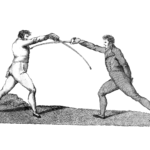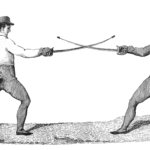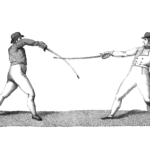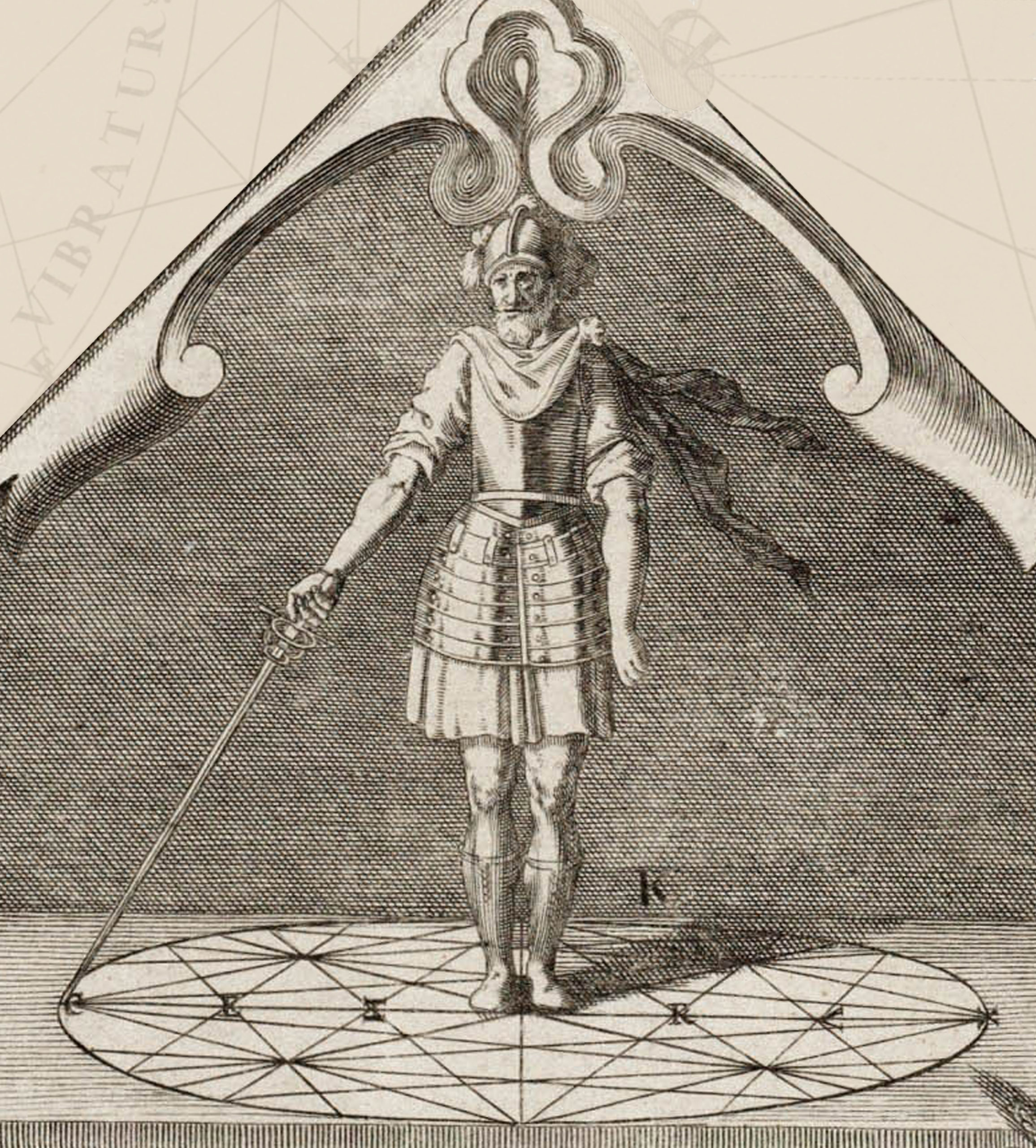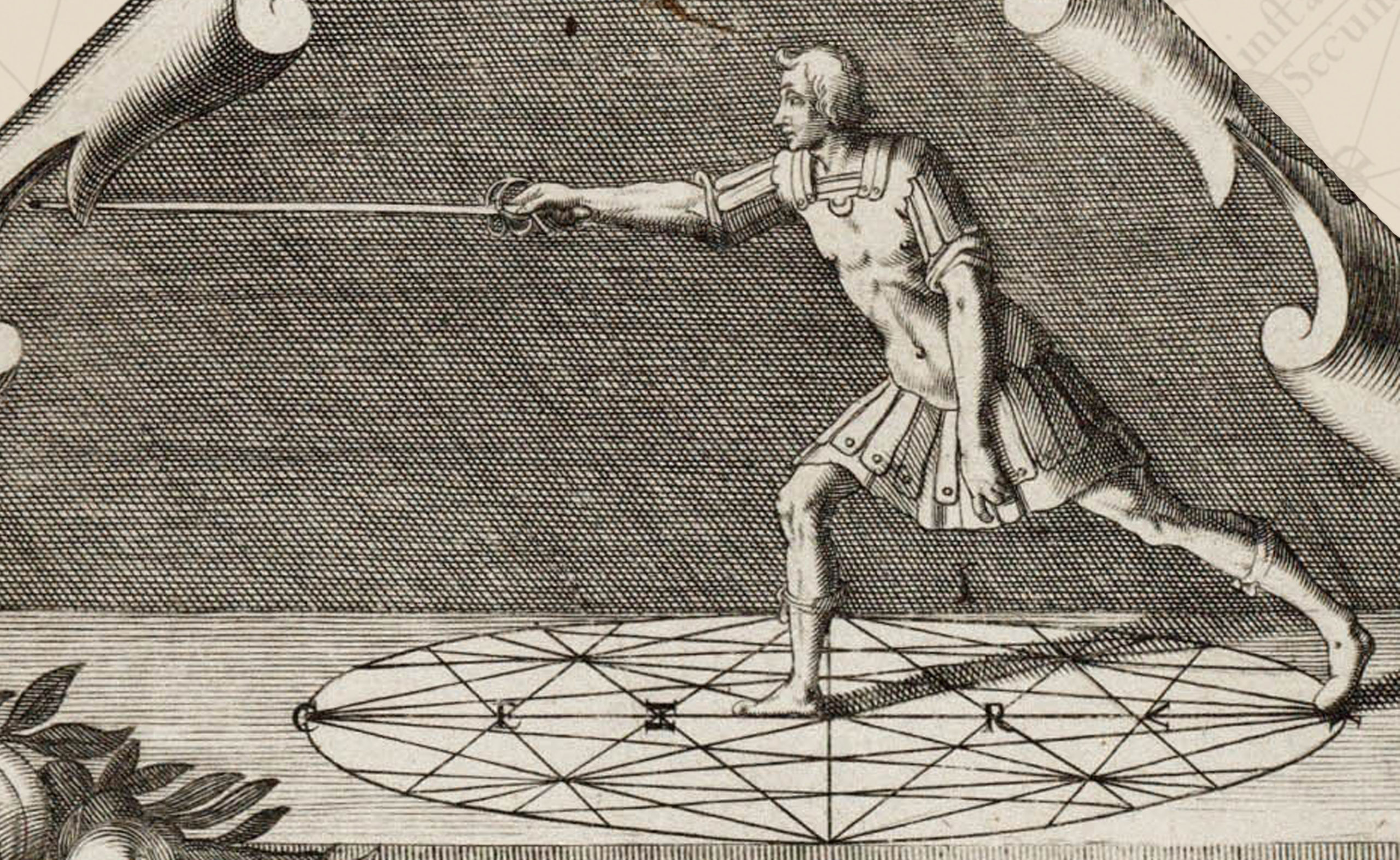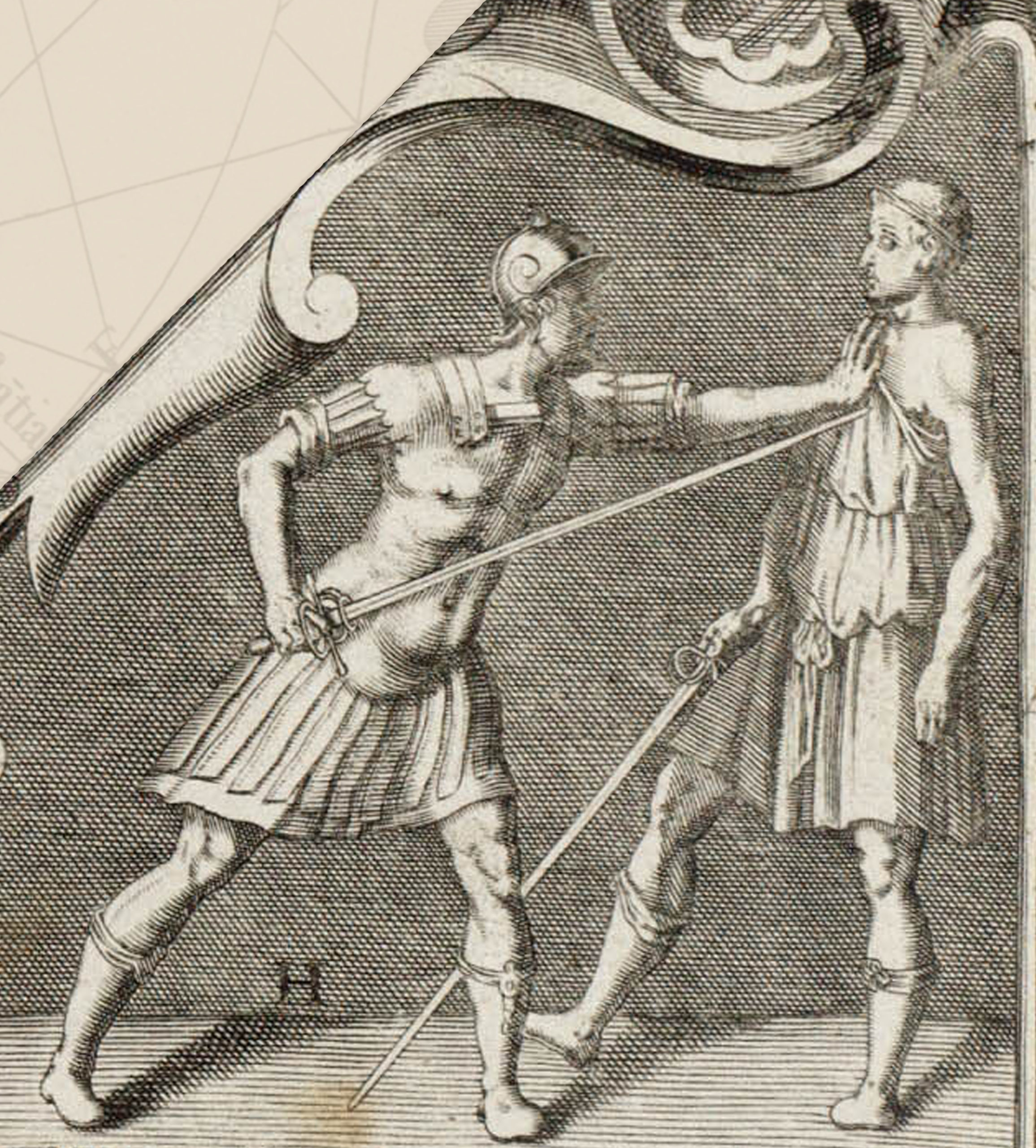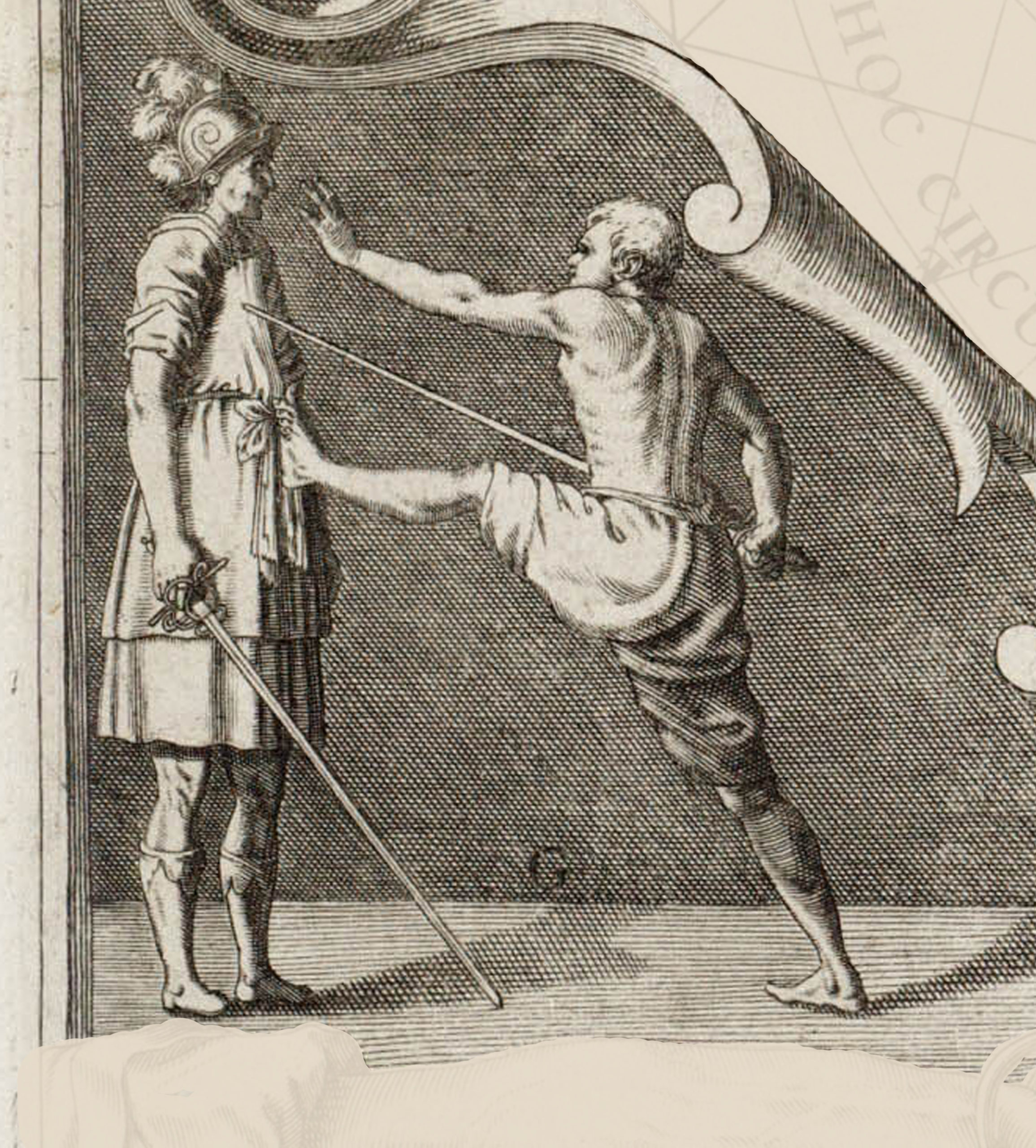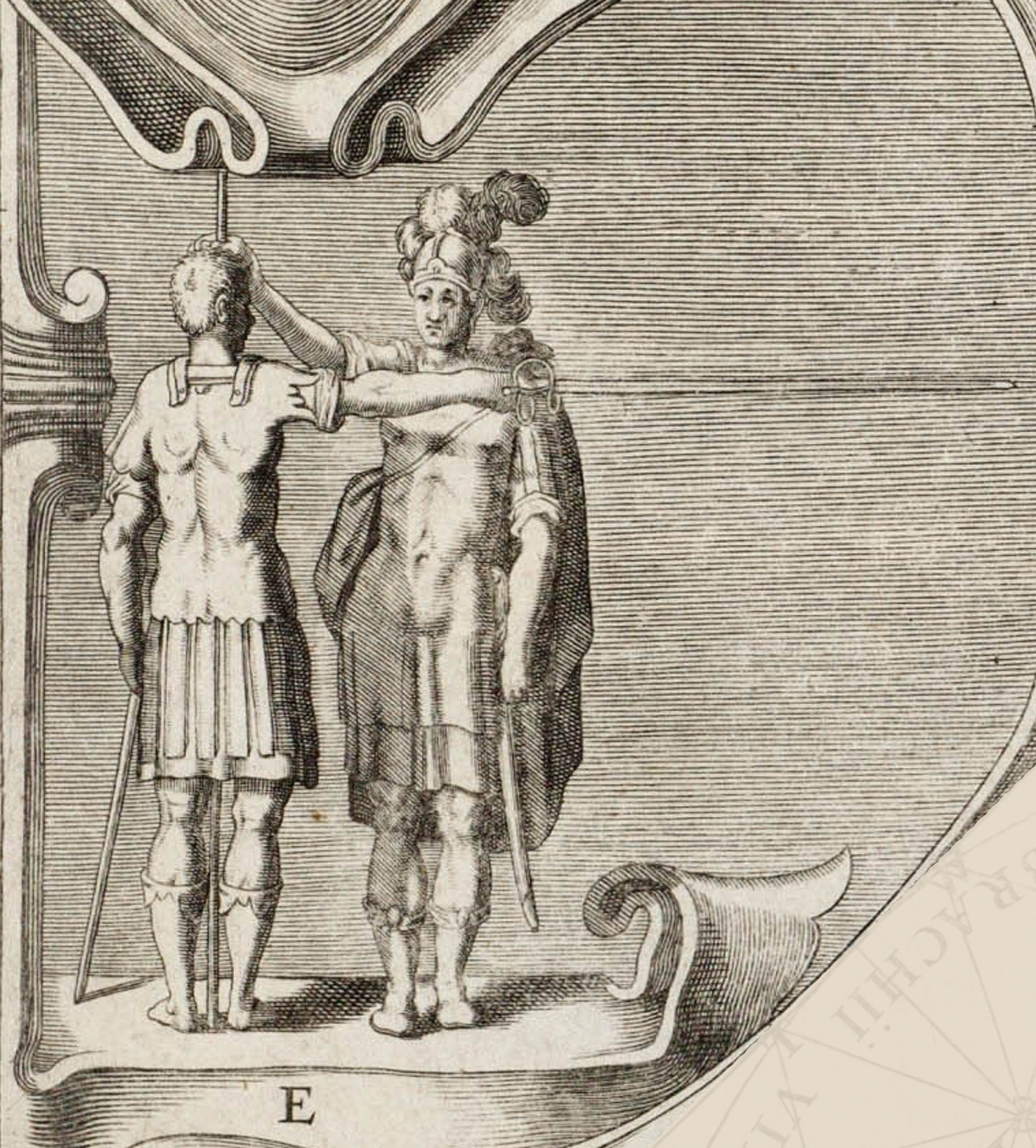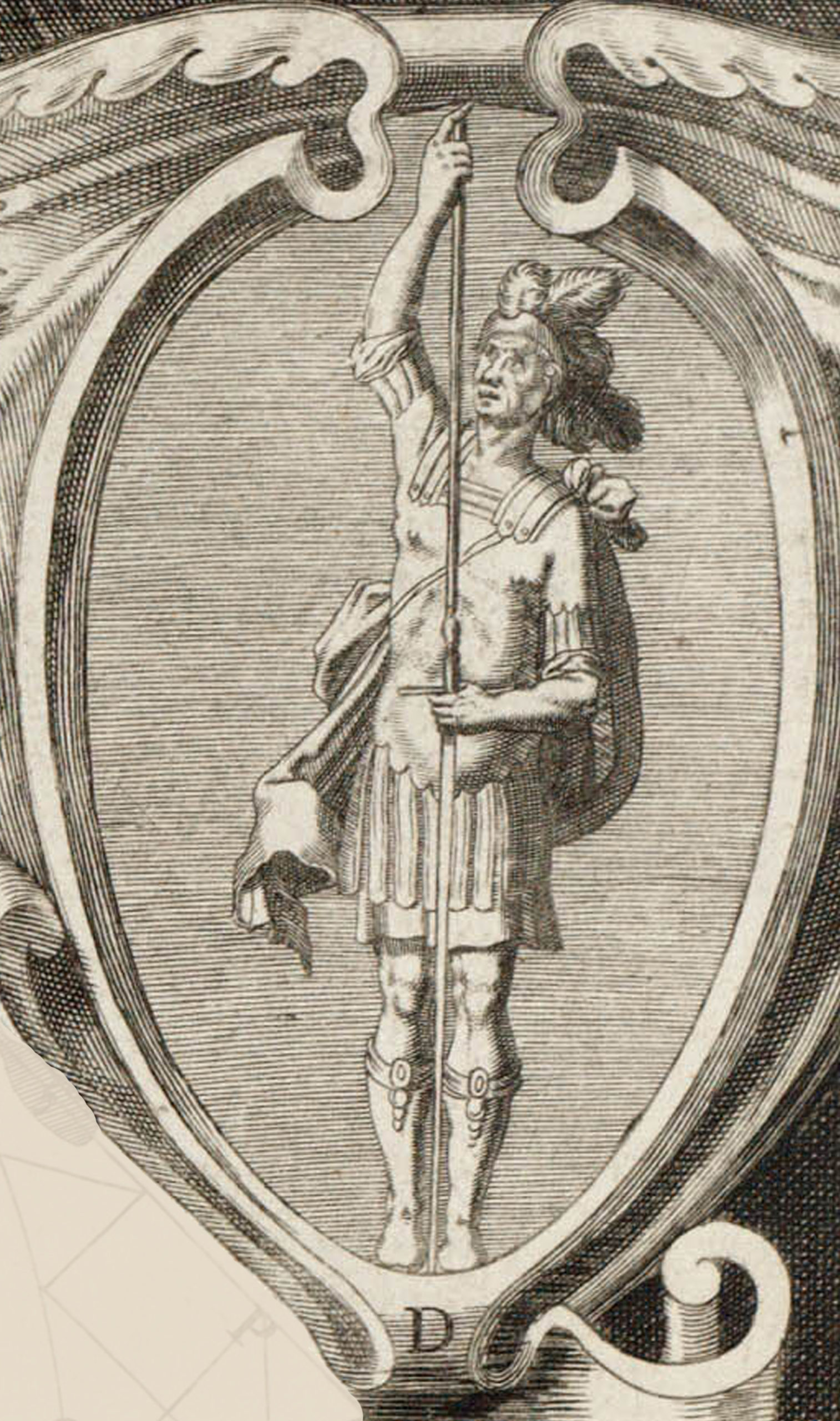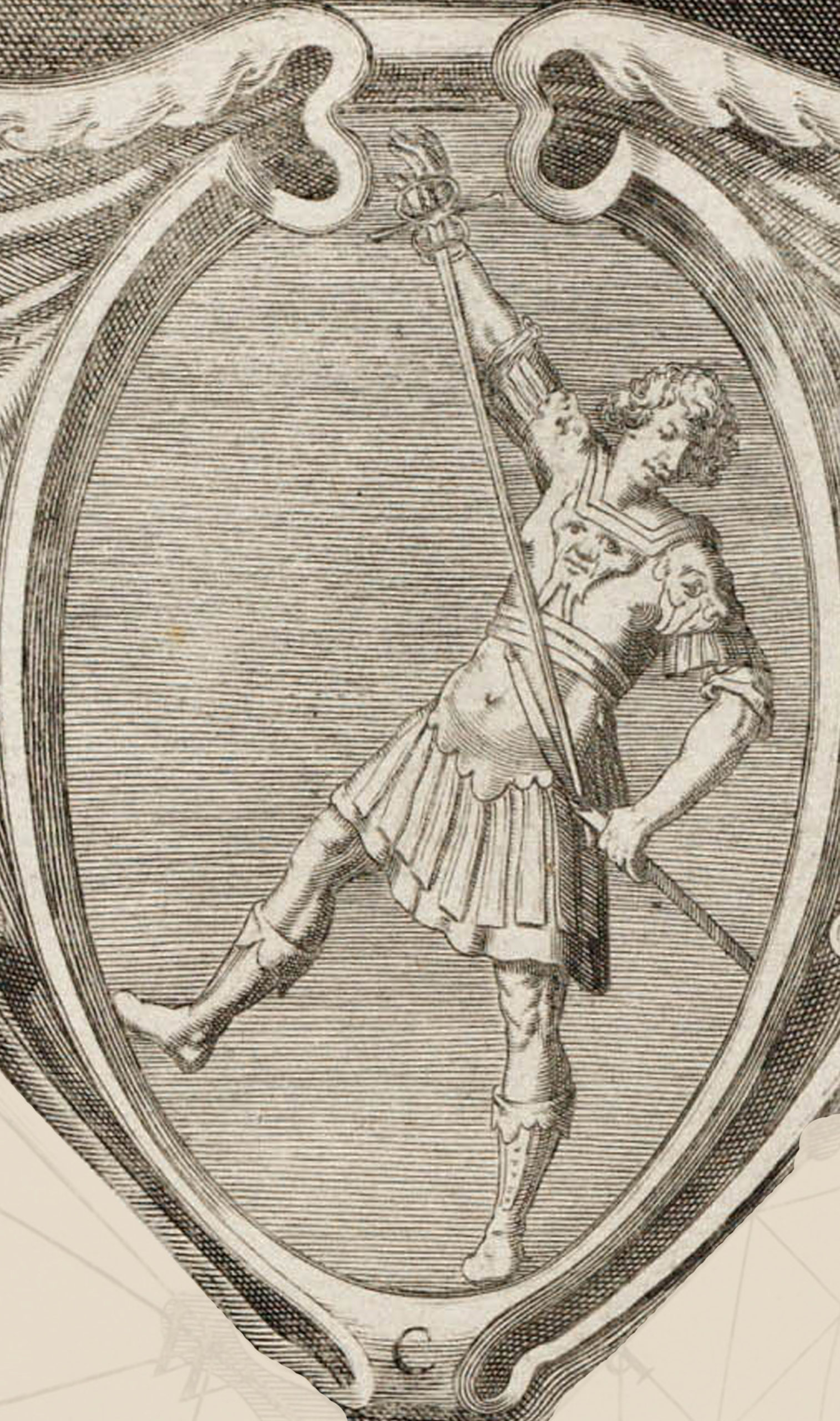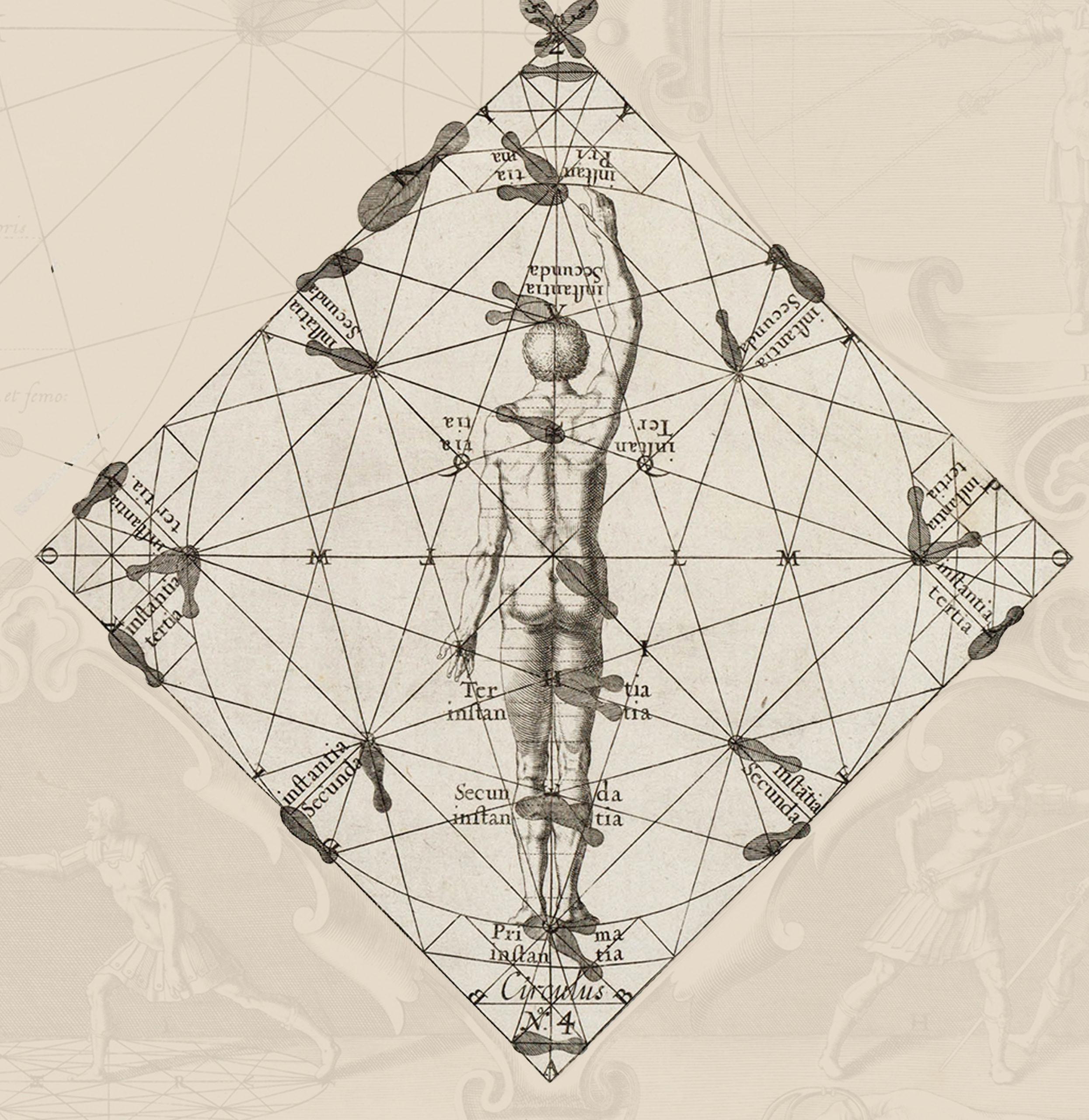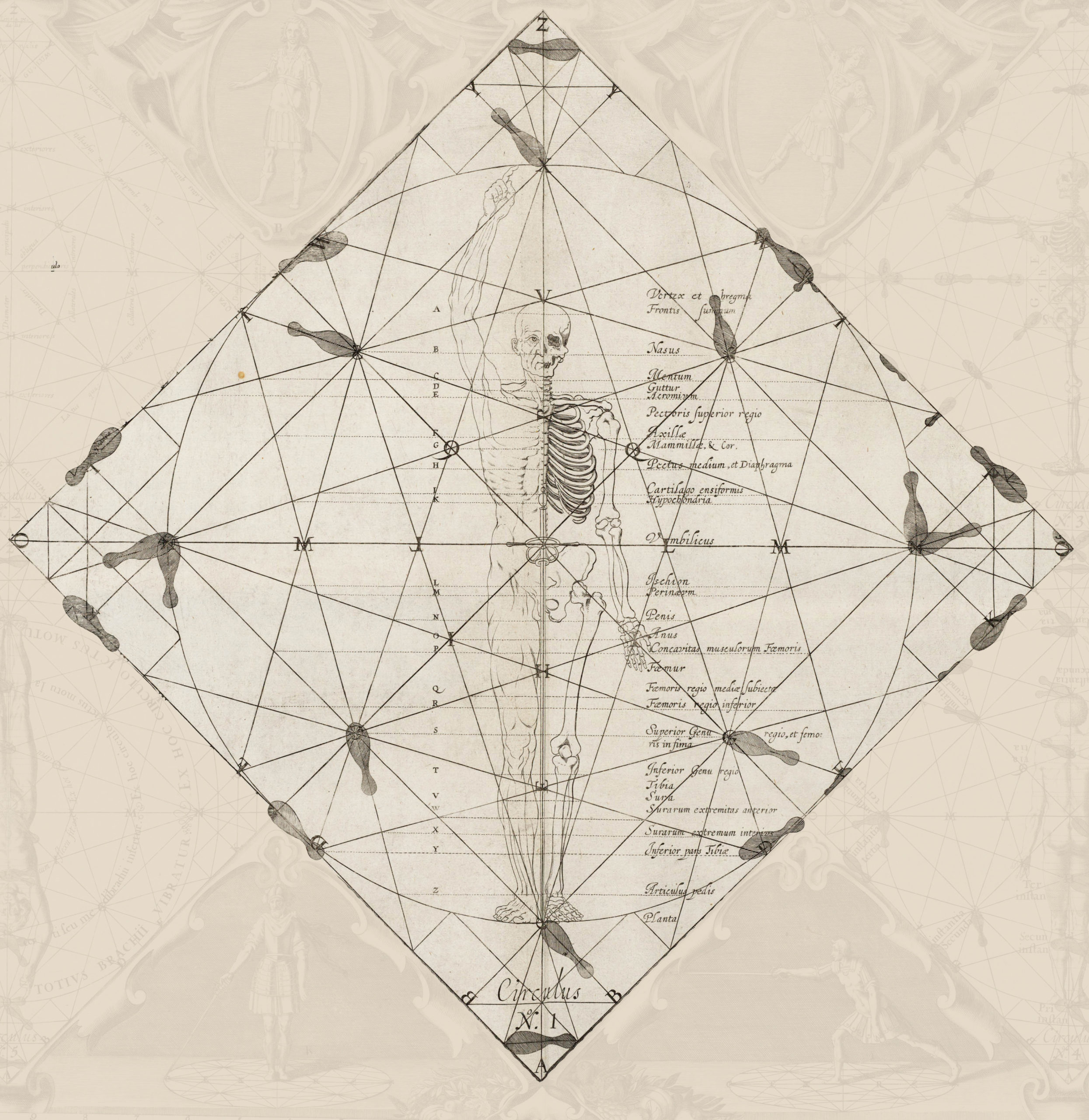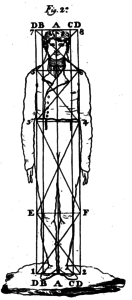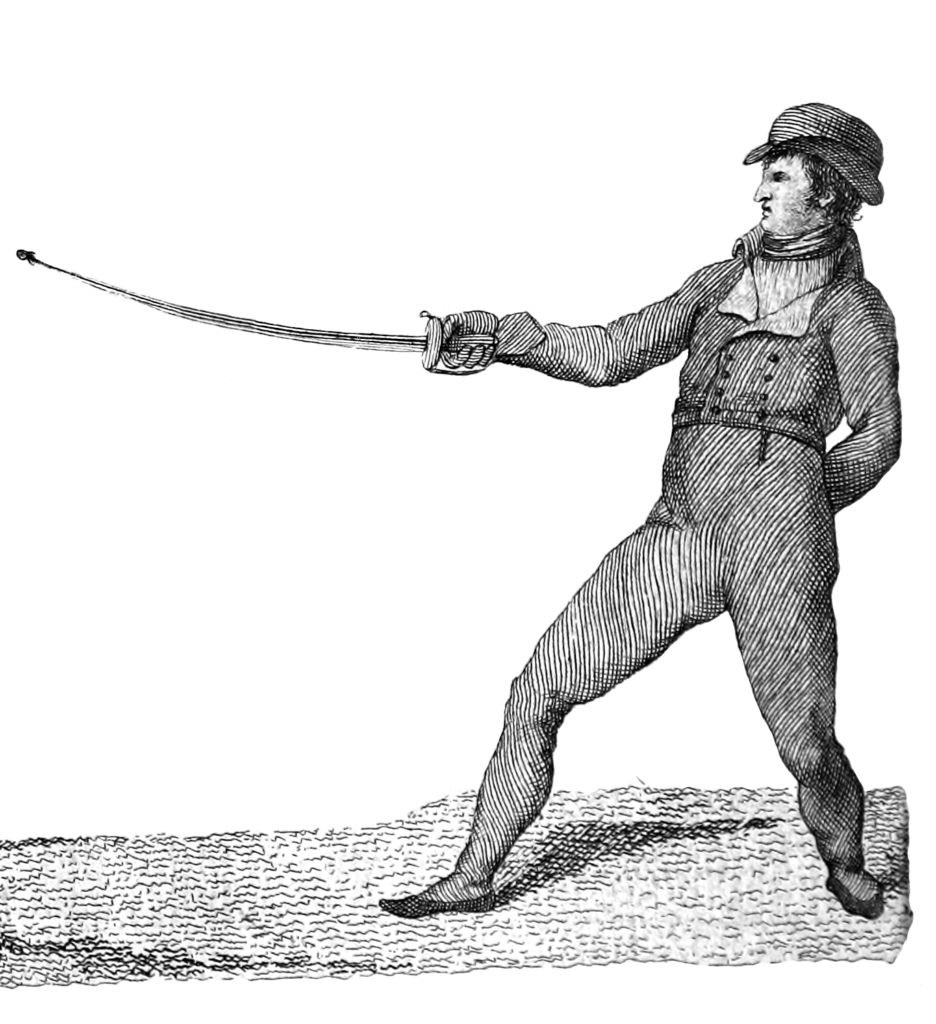280. In the previous chapter I said that, to throw those thrusts, it is necessary to take one of the four guards. In this, I must assume that the opponent took them to inflict the same offenses by means of graduation. It should not be understood by this that it is a necessary requirement that he takes the guards, since this would limit to a great extent, the skill in their practical demonstrations, but that I avail myself of the simplest methods for teaching. When you are well aware of the doctrine I have given, and will give later, it will be known that the skillful executor is able to benefit from any disposition that the enemy offers or any arrangement taken by the body, or sword, or any of these particular parts.
Thrust of Fourth Graduating
281. It must be supposed that after the distance is taken, the contrary affirms in the guard of fourth, the fighter remaining in the offensive common guard, in accordance with what is said in paragraph 105, with respect to the graduation only, without passing the point at which it becomes possible to dominate the enemy’s weapon, let the sabres then walk from that place to the line of the diameter, seeking in this interval, that the hand acquires the full position of fourth. By virtue of this, raise the guard to the height of the superior plane, profiling, and always forcing the enemy sabre, undertake a very fast deep step, ending with the execution of a thrust of fourth on the sword, equal to that in paragraph 270.
Thrust of Third Graduating
282. If the enemy took the guard of third, graduate in accordance with paragraph 106 and, turning the hand fully into third position, bring the sabres onto the line of the diameter. Raise the guard as in the previous, move square, and execute with a deep step, a thrust by the sabre to the origin of the arm, equal to that of paragraph 272.
Thrust of First Graduating
283. The enemy has taken the guard of sixth to defend. By virtue of this, graduate your own sabre, as was said in paragraph 107, after which, turn the hand in fourth to make the weapons come into line. Perfecting this position, raise the guard as I have said, move profile, and take the middle of the enemy sabre. Execute, to the breast of your opposite, a thrust of first, equal to the first of paragraph 274.
Thrust of Second Graduating
284. The enemy having chosen to assert the guard of fifth, graduate then, as was done in paragraph 108, and turn the hand in third to bring the sabres onto the line of the diameter. Raise the guard, move square, take the middle of the contrary sabre, and execute a thrust of second below the arm, equal to the second of paragraph 274.
285. However, for the seizure of these thrusts, take the guard of the one that removes, and not the one that attacks. This is needed by virtue of having already degraduated your weapon by operation of the contrary. To accompany the defenses to the thrusts of this chapter with new graduations of the planes, etc. as practiced in the removals of the four thrusts of the previous chapter and, being all in all equal, the removals of those and these, I defer to those.
286. In the previous chapter, I said how one offends with the weapon on the four principal guards. In the present, I have taught the same by graduation. What is missing are the descriptions of transferring, as they do not differ from those of the first chapter except in that, for these, it is necessary to transfer before the enemy has taken in advance, the guard on which the execution depends. It will suffice to note that, after being transferred according to chapter two of part three, you will practice the same thing that I have prepared in chapter one of this part, both for the offenses and for the removals.

